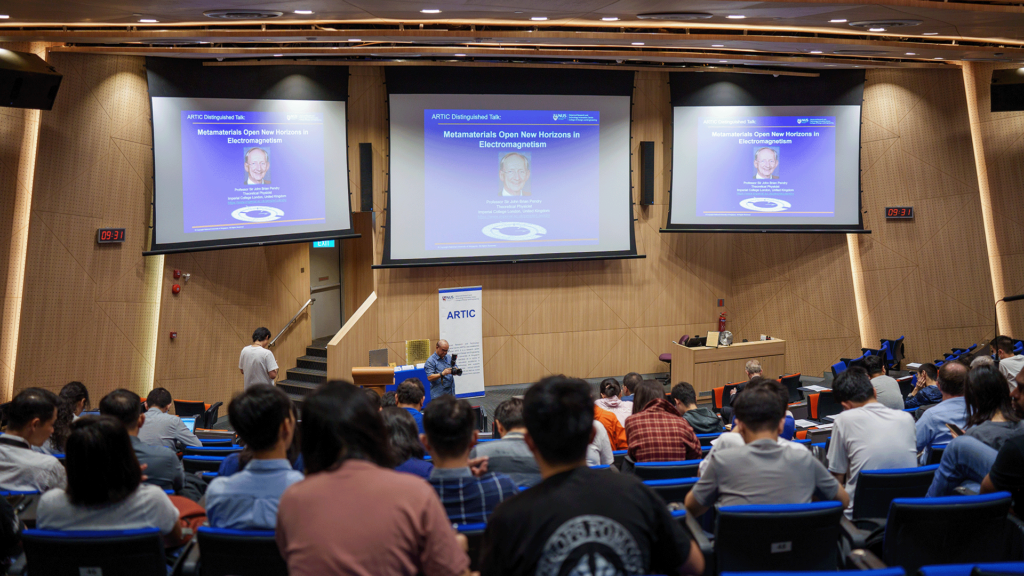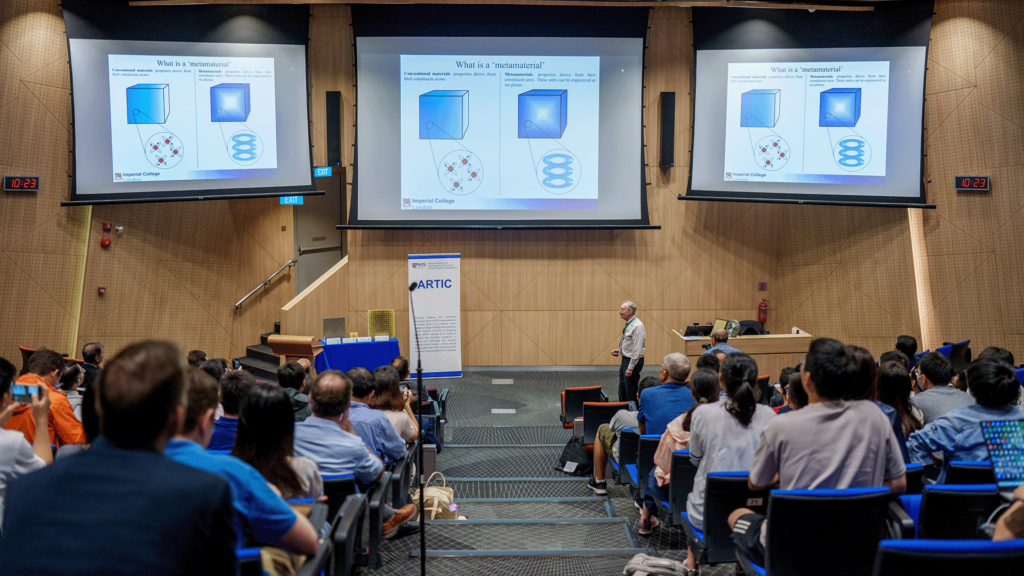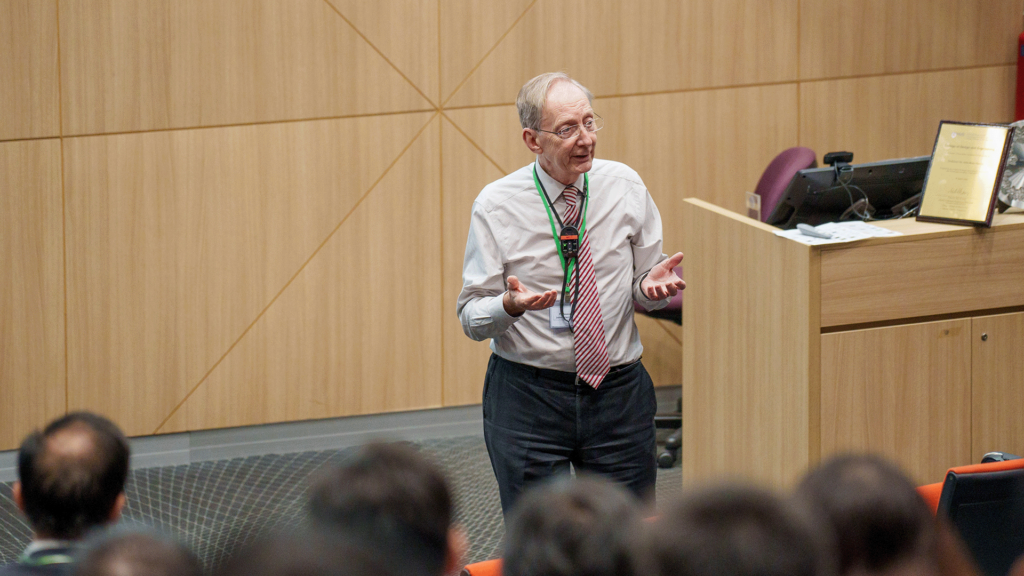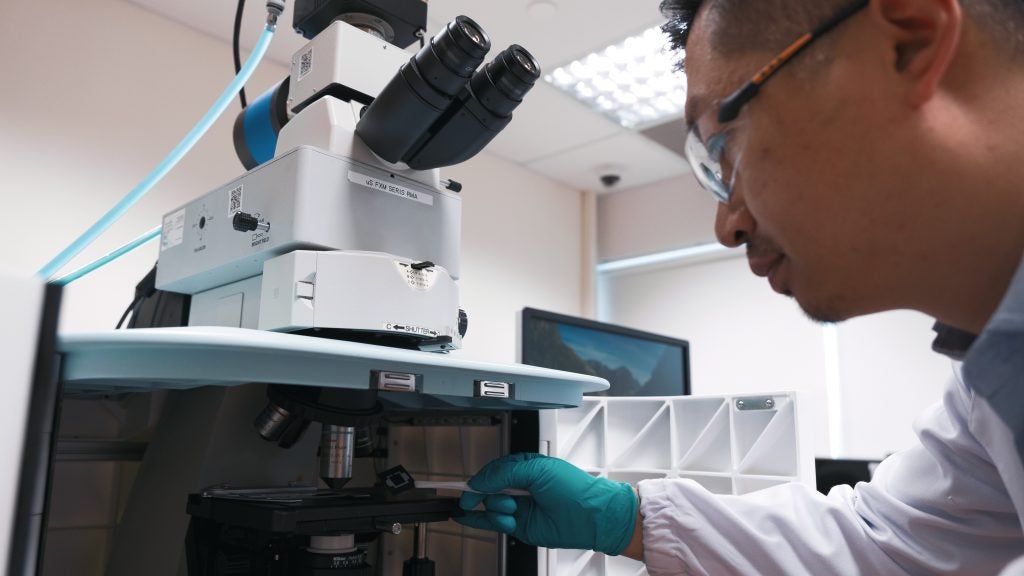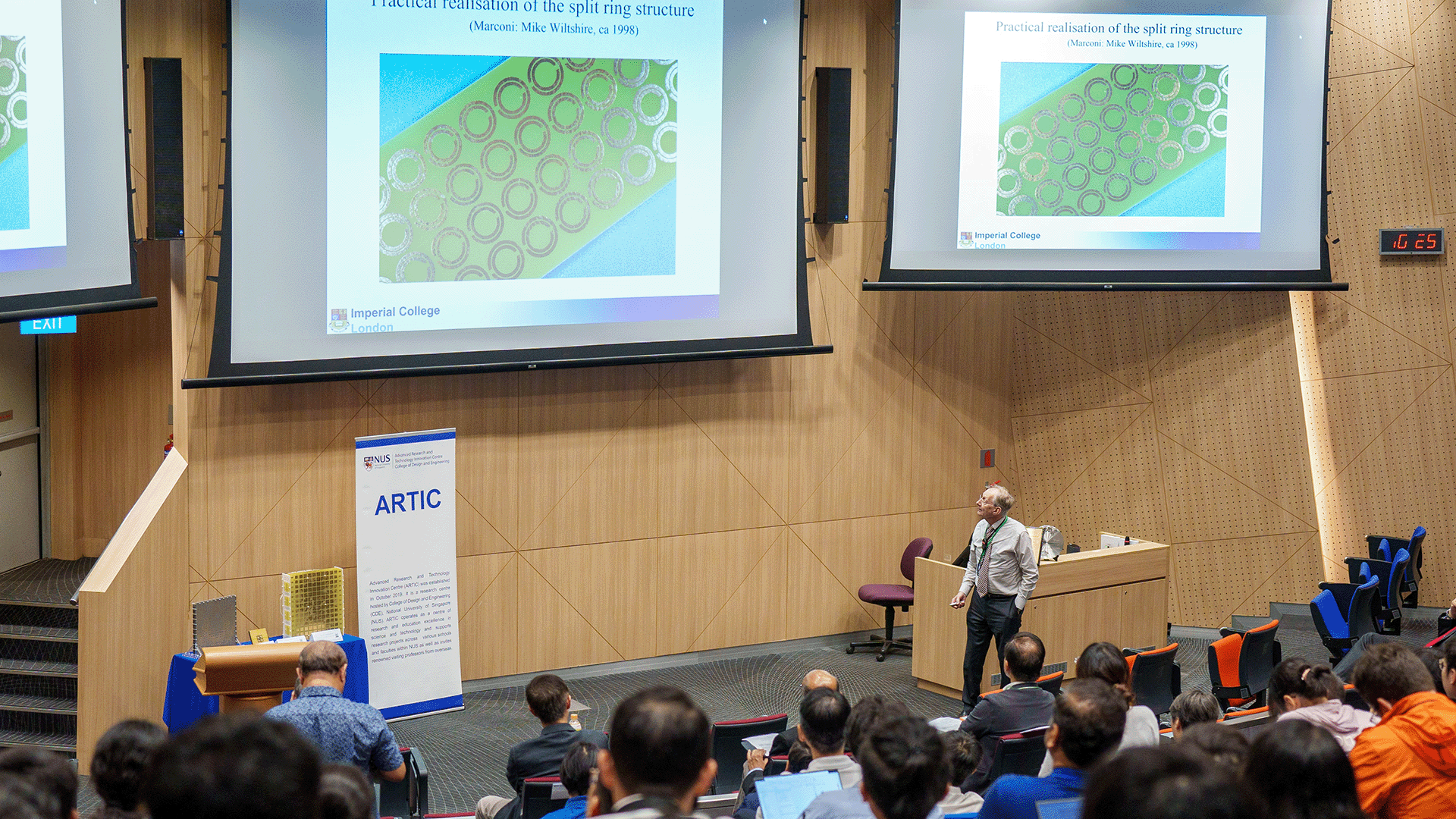
The scientist behind a real-life Harry Potter-style invisibility cloak, Professor Sir John Pendry, recently presented a guest lecture at CDE as part of the ARTIC Distinguished Talks series.
Prof Pendry, a Distinguished Visiting Professor at CDE’s Advanced Research and Technology Innovation Centre (ARTIC), holds a rare distinction among scientists of having established a completely new and unexpected area of research known as metamaterials.
A condensed matter theorist and theoretical physicist from Imperial College London, who was knighted in 2004 for his services to science, Prof Pendry gave a 90-minute talk before an audience of undergraduate, graduate and PhD students from NUS and other institutions, as well as faculty, scientific researchers and representatives of industry.
Entitled Metamaterials Open New Horizons in Electromagnetism, Prof Pendry’s talk took the audience through his work in metamaterials, as well as related research in transformational optics, negative refraction and development of the so-called “perfect lens” whose resolution is limited only by the perfection of manufacture, transcending the constraints imposed by the laws of nature.

Extraordinary properties
Metamaterials are a new class of artificial structures with extraordinary properties not found in nature and with potentially disruptive applications in a wide range of fields.
Conventional materials derive their properties from the chemistry – atoms and molecules – of which they are made. However, with metamaterials, Prof Pendry explained, it is possible to instead implant in the material microscopic nanostructures which have a particular response to electromagnetic radiation, in addition to the chemistry.
Because these structures have infinite possibilities, he said, this gives scientists a lot more flexibility in materials design using structure as well as chemistry to engineer a material’s properties.
In 2006, Prof Pendry attracted global attention after developing the idea of using metamaterials to bend light in such a way that it could form a container around an object – effectively creating an invisibility cloak.
A paper published in the same year, co-written with Professor David R. Smith of Duke University, demonstrated the idea of the cloak at the frequency of microwaves, generating a storm of interest and innovative research around the potential uses for metamaterials that continues to grow.
Potential applications
In his talk, Prof Pendry took the audience through an array of current research into the potential applications for metamaterials and their extraordinary properties.
These range, he said, from telecommunications and solar energy harvesting to stealth technology, biological imaging, and medical diagnostics as well as classified military applications.
Other uses for metamaterials highlighted in his talk included lightweight, ultrathin noise-cancelling materials that could be used in locations such as hospital wards, as well as metamaterials that could be used for earthquake protection by channelling seismic waves around critical infrastructure such as nuclear power plants.
Prof Pendry’s talk also touched on his most recent research exploring metamaterial structures that vary not only in space but also in time - a significant step forward in the metamaterial studies, bringing with it new opportunities and applications he said were yet to be fully explored.
Photo gallery:



